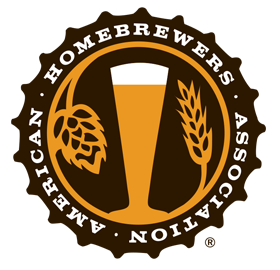
The following beer recipe is featured in the September/October 2019 issue of Zymurgy magazine. Access this issue along with the archives with Zymurgy Online!
Recipe by Terje Raftevold, adapted by Stan Hieronymus and the editors of Zymurgy
This version of raw ale is brewed north of the Jostedalen glacier in western Norway in the three traditional districts Sunnfjord, Nordfjord, and Sunnmøre. Terje Raftevold’s recipe is typical. The name literally means “grain beer,” making it clear how it differs from “beers” made from syrup, juniper berries, and so on. Historically, these beers were brewed from barley, although on the coast the poor would mix in oats when necessary. Today, most people use a mix of 50 percent pale malts and 50 percent Pilsner malts, but there are still a few brewers who make their own malts.
Raw ale wort is not boiled. Because the process has no hot side, brewers must sanitize every bit of equipment that will touch the wort, including the lauter tun. When brewing raw ale, it’s important to have a mash that’s long enough and/or hot enough to properly pasteurize the mash, since there is no boil. The hotter the mash, the shorter it can be, but it’s difficult to be precise about the exact relationship. Adding a hot sparge water infusion at the end of the mash also helps.
Kornøl is always made with a boiled juniper infusion and lautered through juniper. Norwegian farmers use Juniperus communis, which is common in Europe but not in North America. It can be found in Canada and a few places in the United States. The hops can be boiled with a little wort, or the hot wort can just run through the hop bag. In either case, the hop character should be very low and usually not detectable at all. Juniper, rather than hops, balances the flavor. In the glass, these beers look like hefeweizen with no head: yellow, hazy, and opaque with a small coarse head. The aromas are variable, but one should detect boiled juniper, raw ale aromas, strong straw and grain flavors from the malts, and tropical fruitiness from the kveik. The mouthfeel should be full, both from the sugar and from the protein from the raw ale, and also from the kveik yeast. It should also be somewhat mealy from the lack of filtration and the raw character. Carbonation should be low, like British cask ale.
Fermentation time should be two to three days, after which the beer is racked and then stored cool. Alcohol strength is usually 5.3% to 7.6% for the main beer, with final gravities from 1.013 to 1.024. Since the 1990s, quite a few local brewers have begun to boil the wort. Some will boil for an hour, but others boil only 10 to 15 minutes to sterilize the wort.
The following beer recipe is featured in the September/October 2019 issue of Zymurgy magazine. Access this issue along with the archives with Zymurgy Online!
Recipe by Terje Raftevold, adapted by Stan Hieronymus and the editors of Zymurgy
This version of raw ale is brewed north of the Jostedalen glacier in western Norway in the three traditional districts Sunnfjord, Nordfjord, and Sunnmøre. Terje Raftevold’s recipe is typical. The name literally means “grain beer,” making it clear how it differs from “beers” made from syrup, juniper berries, and so on. Historically, these beers were brewed from barley, although on the coast the poor would mix in oats when necessary. Today, most people use a mix of 50 percent pale malts and 50 percent Pilsner malts, but there are still a few brewers who make their own malts.
Raw ale wort is not boiled. Because the process has no hot side, brewers must sanitize every bit of equipment that will touch the wort, including the lauter tun. When brewing raw ale, it’s important to have a mash that’s long enough and/or hot enough to properly pasteurize the mash, since there is no boil. The hotter the mash, the shorter it can be, but it’s difficult to be precise about the exact relationship. Adding a hot sparge water infusion at the end of the mash also helps.
Kornøl is always made with a boiled juniper infusion and lautered through juniper. Norwegian farmers use Juniperus communis, which is common in Europe but not in North America. It can be found in Canada and a few places in the United States. The hops can be boiled with a little wort, or the hot wort can just run through the hop bag. In either case, the hop character should be very low and usually not detectable at all. Juniper, rather than hops, balances the flavor. In the glass, these beers look like hefeweizen with no head: yellow, hazy, and opaque with a small coarse head. The aromas are variable, but one should detect boiled juniper, raw ale aromas, strong straw and grain flavors from the malts, and tropical fruitiness from the kveik. The mouthfeel should be full, both from the sugar and from the protein from the raw ale, and also from the kveik yeast. It should also be somewhat mealy from the lack of filtration and the raw character. Carbonation should be low, like British cask ale.
Fermentation time should be two to three days, after which the beer is racked and then stored cool. Alcohol strength is usually 5.3% to 7.6% for the main beer, with final gravities from 1.013 to 1.024. Since the 1990s, quite a few local brewers have begun to boil the wort. Some will boil for an hour, but others boil only 10 to 15 minutes to sterilize the wort.
Ready to brew? Unlock unmatched resources, validated recipes, and more benefits when you become an AHA member. Join Now
Ready to brew? Unlock unmatched resources, validated recipes, and more benefits when you become an AHA member.
Join for $4.99Already a member? Login here





